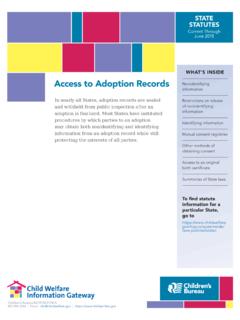Transcription of Data Set Directory of Social Determinants of Health at the ...
1 OVERNMENTAL public Health PSYCHOSOCIAL BEHAVIORAL TRANSPOMPLOYMENT EDUCATION POLITICAL ENVIRONMENTAL HOUSING MEDIBLIC Health PSYCHOSOCIAL BEHAVIORAL TRANSPORT ECONOMY EUCATION POLITICAL ENVIRONMENTAL HOUSING MEDICAL GOVERNMPSYCHOSOCIAL BEHAVIORAL TRANSPORT ECONOMY EMPLOYMENT EVIRONMENTAL HOUSING MEDICAL GOVERNMENTAL public Health HAVIORAL TRANSPORT ECONOMY EMPLOYMENT EDUCATION POLITICOUSING MEDICAL GOVERNMENTAL public Health PSYCHOSOCIAL BANSPORT ECONOMY EMPLOYMENT EDUCATION POLITICAL ENVIRONEDICAL GOVERNMENTAL public Health PSYCHOSOCIAL BEHAVIORAL ONOMY EMPLOYMENT EDUCATION POLITICAL ENVIRONMENTAL HOUOVERNMENTAL public Health PSYCHOSOCIAL BEHAVIORAL TRANSPOMPLOYMENT EDUCATION POLITICAL ENVIRONMENTAL HOUSING MEDIBLIC Health PSYCHOSOCIAL BEHAVIORAL TRANSPORT ECONOMY EUCATION POLITICAL ENVIRONMENTAL HOUSING MEDICAL GOVERNMPSYCHOSOCIAL BEHAVIORAL TRANSPORT ECONOMY EMPLOYMENT EVIRONMENTAL HOUSING MEDICAL GOVERNMENTAL public Health HAVIORAL TRANSPORT ECONOMY EMPLOYMENT EDUCATION POLITICOUSING MEDICAL GOVERNMENTAL public Health PSYCHOSOCIAL BANSPORT ECONOMY EMPLOYMENT EDUCATION POLITICAL ENVIRONEDICAL GOVERNMENTAL public Health PSYCHOSOCIAL BEHAVIORAL ONOMY EMPLOYMENT EDUCATION POLITICAL ENVIRONMENTAL HOUOVERNMENTAL public Health PSYCHOSOCIAL BEHAVIORAL TRANSPOMPLOYMENT EDUCATION POLITICAL ENVIRONMENTAL HOUSING MEDIBLIC Health PSYCHOSOCIAL BEHAVIORAL TRANSPORT ECONOMY EUCATION POLITICAL ENVIRONMENTAL HOUSING MEDICAL GOVERNMPSYCHOSOCIAL BEHAVIORAL TRANSPORT ECONOMY EMPLOYMENT EVIRONMENTAL HOUSING MEDICAL GOVERNMENTAL public Health HAVIORAL TRANSPORT ECONOMY EMPLOYMENT EDUCATION POLITICOUSING MEDICAL GOVERNMENTAL
2 public Health PSYCHOSOCIAL BANSPORT ECONOMY EMPLOYMENT EDUCATION POLITICAL ENVIRONEDICAL GOVERNMENTAL public Health PSYCHOSOCIAL BEHAVIORAL ONOMY EMPLOYMENT EDUCATION POLITICAL ENVIRONMENTAL HOUOVERNMENTAL public Health PSYCHOSOCIAL BEHAVIORAL TRANSPOMPLOYMENT EDUCATION POLITICAL ENVIRONMENTAL HOUSING MEDIBLIC Health PSYCHOSOCIAL BEHAVIORAL TRANSPORT ECONOMY EUCATION POLITICAL ENVIRONMENTAL HOUSING MEDICAL GOVERNMData Set Directory ofSocial Determinants of Healthat the Local department Of Health and Human ServicesCenters for disease control and PreventionSuggested CitationHillemeier M, Lynch J, Harper S, Casper M. Data Set Directory of Social Determinants ofHealth at the Local Level. Atlanta: department of Health and Human Services, Centersfor disease control and prevention ; More InformationE-mail: National center for Chronic disease prevention and Health PromotionDivision of Adult and Community HealthCardiovascular Health Branch4770 Buford Highway NEMS K-47 Atlanta, GA 30341-3717 OnlineThis publication is available at authors would like to thank the following people for their valuable contributions to thepublication of this Directory : the workshop participants (listed on page iii) for providing theirexpert opinions on the dimensions and components of the Social environment; Kurt Greenlundand Ishmael Williams for their involvement in the early stages of this project; Mark Harrison forthe beautiful cover design, his expertise in formatting information-rich tables, and his greateditorial skills.
3 And Amanda Crowell for serving as an excellent copy work was funded by ASPH/CDC/ATSDR Cooperative Agreement S1091-19 site addresses of nonfederal organizations are provided solely as a service to our read-ers. Provision of an address does not constitute an endorsement of this organization by CDCor the federal government, and none should be inferred. CDC is not responsible for the con-tent of other organization s Web Set Directory of Social Determinants of Health at the Local Level Marianne Hillemeier, PhD pennsylvania State University John Lynch, PhD University of Michigan Sam Harper, MSPH centers for disease control and prevention Michele Casper, PhD centers for disease control and prevention The contents of this Directory are adapted from the following article: Hillemeier , J. Lynch, S. Harper, and M. Casper. 2003. Measuring contextual characteristics for community Health . Health Services Research 38(6 part 2):1645-717. This document is published in partnership with the Social Determinants of Health Work Group at the centers for disease control and prevention , department of Health and Human Services Workshop Participants*Donna Armstrong University at Albany.
4 SUNY department of Epidemiology Elizabeth Barnett West Virginia University department of Community Medicine Stuart Batterman University of Michigan Environmental Health Sciences Matt Boulton Michigan department of Community Health Bureau of Epidemiology Michele Casper centers for disease control and prevention Cardiovascular Health Branch George Davey Smith University of Bristol department of Social Medicine Allen Dearry National Institute of Environmental Health Sciences Ana Diez Roux Columbia University Division of General Medicine Jim Dunn University of British Columbia department of Health Care and Epidemiology Bonnie Duran University of New Mexico School of Medicine department of Family and Community Medicine Anne Ellaway University of Glasgow Social and public Health Sciences Unit Arline Geronimus University of Michigan department of Health Behavior and Health Education Kurt Greenlund centers for disease control and prevention Cardiovascular Health Branch Sam Harper National center for Health Statistics, CDC Office of Analysis, Epidemiology and Health Promotion Marianne Hillemeier pennsylvania State University department of Health Policy and Administration James House University of Michigan Survey Research center George Kaplan University of Michigan department of Epidemiology James Krieger Epidemiology Planning and Evaluation public Health Seattle and King County Nancy Krieger Harvard School of public Health department of Health and Social Behavior Verna Lamar-Welch centers for disease control and prevention Cardiovascular Health Branch Tama Leventhal Teachers College.
5 Columbia University center for Children and Families Cynthia Lopez University of New Mexico School of Medicine department of Family and Community Medicine John Lynch University of Michigan department of Epidemiology iii Jeffrey Morenoff University of Michigan department of Sociology Patricia O'Campo Johns Hopkins University School of Hygiene and public Health Elsie Pamuk National center for Health Statistics, CDC Office of Analysis, Epidemiology, and Health Promotion Harold Pollack University of Michigan, department of Health Management and Policy Amy Schulz University of Michigan department of Health Behavior and Health Education Mary Shaw University of Bristol School of Geographical Sciences Sharon Simonton University of Michigan department of Epidemiology Mah-jabeen Soobader Rochester General Hospital Division of General Pediatrics Gavin Turrell Queensland University of Technology School of public Health Norman Waitzman University of Utah department of Economics Pamela Waterman Harvard School of public Health David Williams University of Michigan Survey Research center iv Ishmael Williams centers for disease control and prevention Cardiovascular Health Branch Doug Willms University of New Brunswick Faculty of Education John Wooding University of Massachusetts.
6 Lowell Regional Economic and Social Development Michael Woolcock World Bank v Contents Introduction to the Data Set 1 Dimensions of the Social 3 4 4 Data 5 11 11 Data 12 17 17 Data 18 23 23 Data 24 27 27 Data 28 31 31 Data 33 37 37 Data 38 41 41 Data 42 public 45 45 Data 46 49 49 Data 51 Continued on next page vi Contents, Continued 53 53 Data 54 57 57 Data 58 63 vii Introduction to the Data Set Directory There is widespread interest in the role of local Social Determinants of Health at the local level. Federal, state, and local government agencies, academic institutions, and community organizations are increasingly recognizing the need to understand and address the socioeconomic contexts within which people work and play in order to improve their Health and welfare .
7 There is renewed emphasis on implementing interventions aimed at improving socioenvironmental conditions. Such interventions have the potential to produce wide-ranging Health benefits (see the April 2003 supplement of the American Journal of Preventive Medicine) and could reduce marked Health disparities that remain a high-priority concern for public Health (USDHHS 2000). It is critical that decisions regarding how to improve Health and eliminate Health disparities are integrated into the larger picture of community characteristics that promote or endanger Health . A recent theme in the literature and in meetings of interested parties around the country is the need for improved conceptualization and availability of data on how the Social environment impacts the Health of populations (Pickett and Pearl 2001; Macintyre and Ellaway and Cummins 2002; Yen and Syme 1999; Kaplan and Lynch 1997, 2001; Diez Roux 2004; Berkman 2004; Krieger and Davey Smith 2004; Institute of Medicine 1997; M.)
8 Miringoff and Miringoff 1999; Howell et al. 2003). This Data Set Directory of Social Determinants of Health at the Local Level is a response to those needs. The Directory contains an extensive list of existing data sets that can be used to address these Determinants . The data sets are organized according to 12 dimensions, or broad categories, of the Social environment. Each dimension is subdivided into various components. This Directory grew out of a project based at the University of Michigan School of public Health and funded by the centers for disease control and prevention (CDC). Investigators from the United States and Europe were invited to a workshop to review an initial list of dimensions important for understanding Social Determinants of Health . Participants represented a wide range of disciplines including epidemiology, sociology, geography, medicine, demography, economics, developmental psychology, education, and toxicology. Others with interests and expertise in the effects of community contextual characteristics on Health were also invited, including government experts on data sources and geographic information systems, public Health practitioners, and experts on community consultation and processes.
9 Continued on next page 1 Social Determinants of Health at the Local Level Structured discussions among the workshop participants led to consensus on a core set of 12 dimensions. Participants then generated detailed lists of components within each dimension, along with suggestions for possible data sources and specific variables that might be used to measure the components of each dimension. Based on the results of the workshop, the lists of components and data indicators were refined by the University of Michigan staff, taking into consideration both conceptual relevance and availability of appropriate data at the local level. An extensive search for data sets that address each of the dimensions and components was conducted including both traditional and non-traditional sources.
10 The results of this search are presented in this Directory . We focused primarily, but not exclusively, on data sets that contain information for Metropolitan Statistical Areas (MSAs). We chose to focus on MSAs primarily because there is a broad range of data for MSAs that is routinely collected and geocoded. We recognize, however, that there is no single ideal level for measuring Social Determinants of Health in relationship to Health -damaging and Health -promoting factors. In fact, different characteristics may operate at different levels. An argument can be made that using more localized units, such as county, zip code, census tract, and census block, increases the likelihood of measuring certain aspects of the Social and physical environment actually experienced by individuals. Conversely, considerably more richly detailed contextual data sources are available for larger units such as states. Given the inevitable trade-offs between data availability and proximity to lived experience, we chose to focus on MSAs.



















